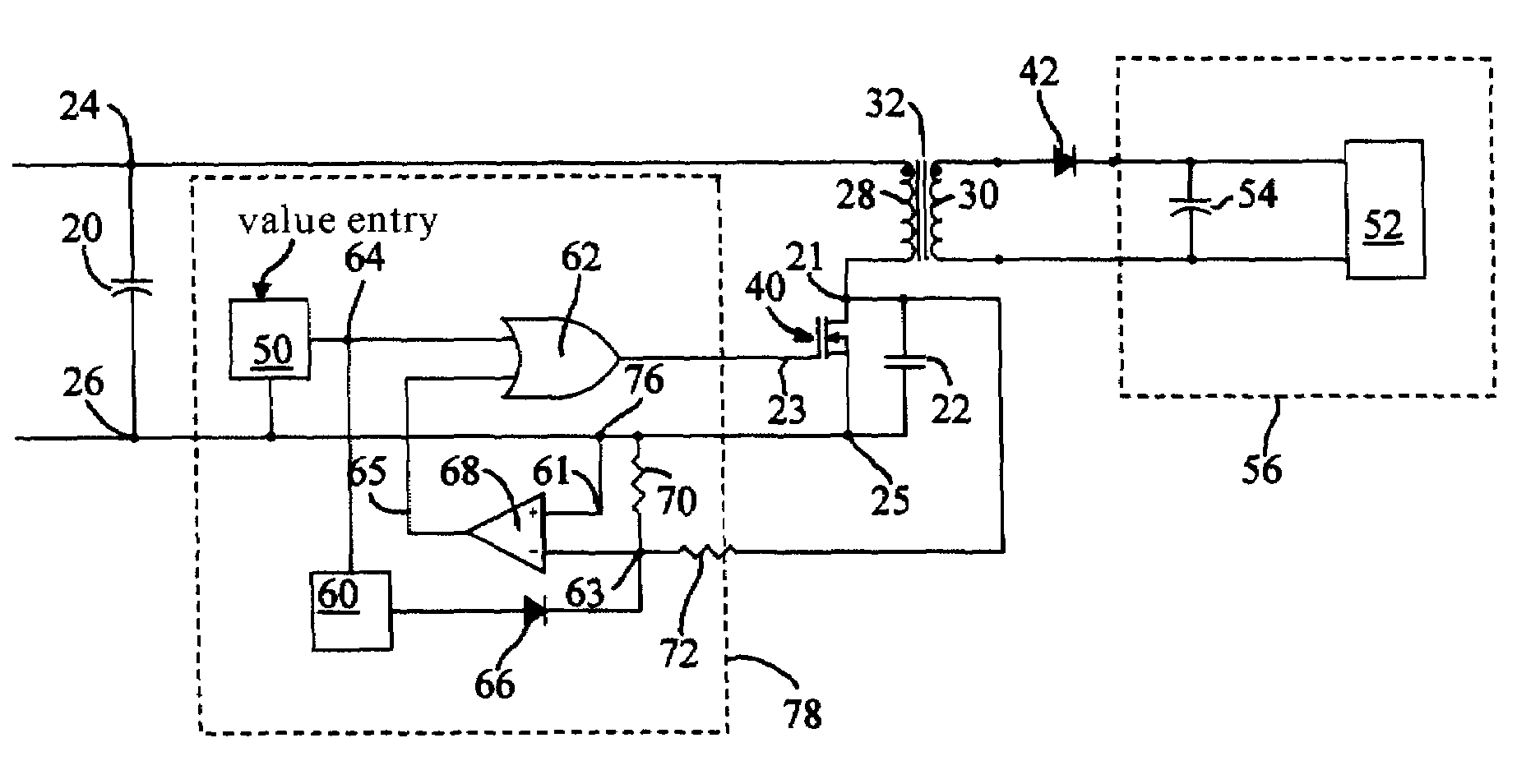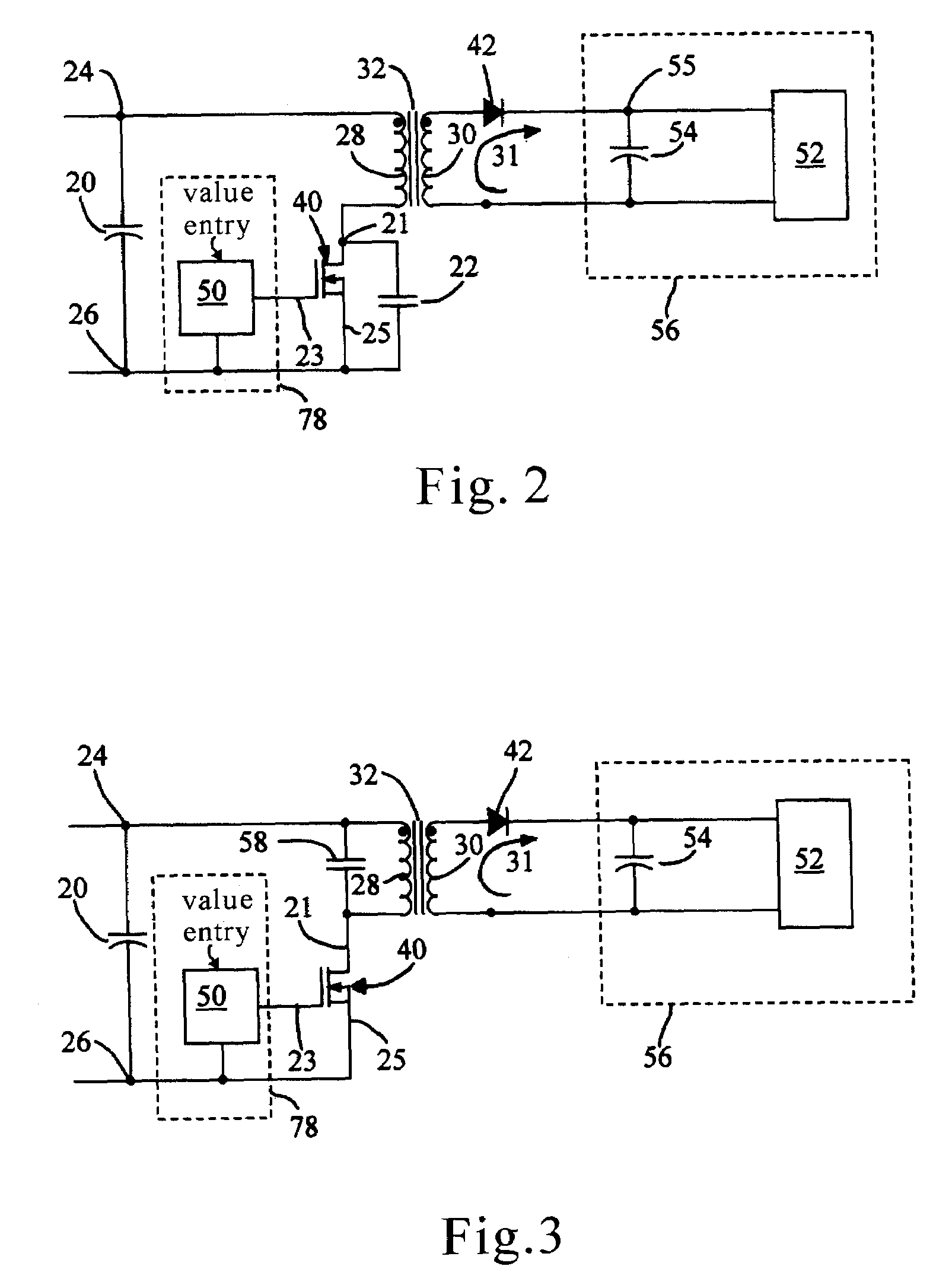Switching-type power converter
a power converter and switch-type technology, applied in the direction of power conversion systems, dc-dc conversion, climate sustainability, etc., can solve the problems of switching loss, non-zero voltage, and techniques with drawbacks
- Summary
- Abstract
- Description
- Claims
- Application Information
AI Technical Summary
Benefits of technology
Problems solved by technology
Method used
Image
Examples
Embodiment Construction
[0025]The preferred embodiment of the invention consists of (1) loading-independent zero-voltage switching (LIZVS) circuit, (2) pulse width extension tracking (PWET) circuit, and (3) current ripple cancellation (CRC) circuit.
[0026]The LIZVS circuit is shown in FIG. 2. Zero-voltage switching is used to reduce the switching loss. The resonant elements are primary winding 28 of transformer 32 and capacitor 22. The capacitor can be connected alternatively across transformer primary winding 28 as shown in FIG. 3.
[0027]In order to make the resonant characteristic independent of the loading current, current flow through transformer secondary winding 31 is blocked by the reverse biasing of diode 42 when the primary winding 28 and capacitor 22 resonate. Consequently, there is no secondary current to affect the inductance of primary winding 28.
[0028]Input nodes 24 and 26 (reference) connect to input capacitor 20. Pulse generator 50 drives switch 40. When switch 40 turns on, current flows thro...
PUM
 Login to View More
Login to View More Abstract
Description
Claims
Application Information
 Login to View More
Login to View More - R&D
- Intellectual Property
- Life Sciences
- Materials
- Tech Scout
- Unparalleled Data Quality
- Higher Quality Content
- 60% Fewer Hallucinations
Browse by: Latest US Patents, China's latest patents, Technical Efficacy Thesaurus, Application Domain, Technology Topic, Popular Technical Reports.
© 2025 PatSnap. All rights reserved.Legal|Privacy policy|Modern Slavery Act Transparency Statement|Sitemap|About US| Contact US: help@patsnap.com



